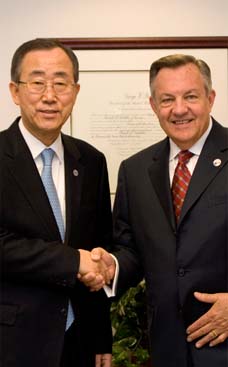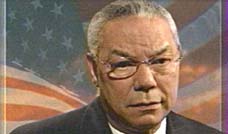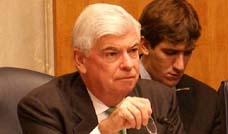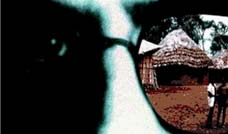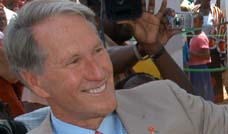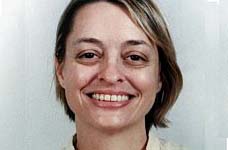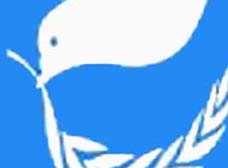
Puryear, who is African-American, was born and raised in Washington, D.C., where his father was a postal worker and his mother an elementary-school teacher. After college at Catholic University of America, he spent two crucial years in the Peace Corps in Sierra Leone. What impressed him there most was not the tribal art but the well-made things of everyday life: baskets, boats, woven fabric. From there he moved to Sweden for two years to study printmaking and to experiment on his own with sculpture. "That's where it became pretty clear to me," he says. "I was more interested in making things than in making images of things." Award winning sculptor Martin Puryear served as a Peace Corps volunteer in Sierra Leone in the 1960's where he met and studied with traditional craftsmen, who taught him to work wood with hand tools.
Time Magazine says Martin Puryear is Man of Mysteries
The Man of Mysteries
Friday, Nov. 02, 2007 By RICHARD LACAYO
I had a funny misunderstanding with Martin Puryear a few weeks ago. We were talking about a work of his from the late 1980s and the problem of beauty in art. You might not know that beauty is a problem, but for a long time it has been suspect as a virtue. If Picasso and Braque had worried about beauty, the thinking goes, they would never have ventured into Cubism. And in due time they found their way to--what else?--another kind of beauty.
Related Articles
I had been talking to Puryear about Maroon, a large, dark, bulbous form made mostly from wood and wire mesh covered with tar. The piece is part of his triumphant retrospective that opens Nov. 4 at the Museum of Modern Art in New York City, which was organized by John Elderfield, MOMA's chief curator of painting and sculpture. As soon as I brought up the beauty problem, Puryear agreed. It took me a minute to realize we were talking past each other. He thought the work was so challenging to ordinary notions of what's pleasing to the eye "that a museum is brave to have this thing." I thought it was so flat-out gorgeous that he was in danger of being accused of making something "simply" beautiful.
By now, at 66, Puryear is well understood as a man whose art should never be understood too quickly. What he makes are powerfully ambiguous forms, things that almost correspond to familiar realities but not quite, so that they speak in subtle terms to undisclosed locations within ourselves. It's not uncommon to hear him described as one of the most formidable living American artists. Agreed. And if what he makes is also weirdly beautiful, well, sometimes a question mark is the sexiest curve in the world.
Puryear, who is African-American, was born and raised in Washington, D.C., where his father was a postal worker and his mother an elementary-school teacher. After college at Catholic University of America, he spent two crucial years in the Peace Corps in Sierra Leone. What impressed him there most was not the tribal art but the well-made things of everyday life: baskets, boats, woven fabric. From there he moved to Sweden for two years to study printmaking and to experiment on his own with sculpture. "That's where it became pretty clear to me," he says. "I was more interested in making things than in making images of things."
And he means making in a way that a lot of artists no longer do. Jeff Koons and Damien Hirst don't lay a finger on much of what bears their names. They hand their ideas over to studio assistants or skilled fabricators. Puryear is his own skilled fabricator; he has brought carpentry, joinery and boatbuilding techniques into his art. He knows that's a retro virtue. "To get your hands dirty building something?" he asks. "You can buy that nowadays. So a lot of artists buy a very high level of craft from somebody else. They don't put themselves in the place of the maker. I persist in that practice. It's a rich place to be. And also"--he laughs when he says this--"I'm a very controlling person."
When he returned to the U.S. in 1968 to begin graduate work at Yale, Puryear discovered minimalism. Donald Judd's boxes, Carl Andre's metal plates on the floor--there was a whole new world of militant reduction in art, of fiercely simplified forms, preferably in factory-milled materials. Meanwhile he also discovered the virtuoso cabinet maker James Krenov, who was asking how the individual qualities of each piece of wood could give a particular voice to whatever he made. With those models, Puryear had in place the elements of his lifelong working practice. He would put together things that were intricately crafted but not "useful" except in the ways peculiar to the enigmatic objects we call art. And he would begin with an economical language derived from minimalism but draw each form out until it insinuated itself into places where square-shouldered minimalism never fit well, into feelings about frustration, concealment, yearning and release that you associate with the Surrealists or Louise Bourgeois.
From that blend one great work after another has emerged, all of them different, most of them hovering between the abstract and the recognizable. From time to time over the years Puryear has even edged into producing recognizable objects. As early as 1981 he made Desire, a giant wagon wheel connected by a long wooden spoke to an upright basket-weave stanchion, a thing forever in orbit around a center it can't approach. But lately he has been introducing into his work more of what he calls "things with a previous life in the world": wheels, tree trunks and even wheelbarrows that are found objects and that come into his art trailing associations.
"What I'm interested in now is trying to subvert the intense control that my imagination has on the work," he says. "One of the ways is to work with something that's already a given, so you have to rise to a different place to incorporate it into what you do, to make it your own."
That would describe C.F.A.O., which Puryear completed this year. It consists of an old wheelbarrow that carries a timber framework tower that's over 7 ft. (more than 2 m) tall. Embedded face-first in the nest of wood is a replica of the underside of an African tribal mask.
The initials stand for Compagnie Française de l'Afrique Occidentale, a French trading company that once operated in Sierra Leone. Puryear connects the piece to ideas about cultural contact, about the French and Africans colliding in the place where history mingled them. I couldn't help thinking of Puryear himself, the artist venturing into the world in the mask we all wear sometimes and carrying his gifts and burdens before him. He might object. But as I said before, he's not a man to be understood too quickly. Not by us. Maybe not even by himself.






